
The Grumman TBF Avenger is an American World War II-era torpedo bomber developed initially for the United States Navy and Marine Corps, and eventually used by several air and naval aviation services around the world.

The Douglas TBD Devastator was an American torpedo bomber of the United States Navy. Ordered in 1934, it first flew in 1935 and entered service in 1937. At that point, it was the most advanced aircraft flying for the Navy and possibly for any navy in the world. However, the fast pace of aircraft development quickly caught up with it, and by the time of the Japanese attack on Pearl Harbor the TBD was already outdated.

Torpedo Squadron 8 (VT-8) was a United States Navy squadron of World War II torpedo bombers. VT-8 was assigned initially to the air group of the aircraft carrier USS Hornet, joining the ship shortly after her commissioning in October 1941.

Strike Fighter Squadron 25 (VFA-25) is an aviation unit of the United States Navy based at Naval Air Station Lemoore, California. The squadron flies the Boeing F/A-18E Super Hornet and is currently assigned to Carrier Air Wing 11. Its callsign is Fist.

USS Massey (DD-778), an Allen M. Sumner-class destroyer, was a United States Navy ship that served between 1944 and 1973.
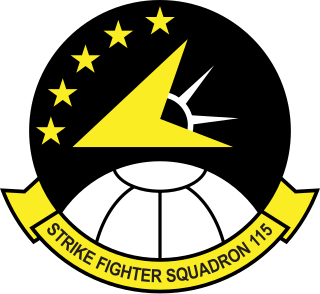
Strike Fighter Squadron 115 (VFA-115) is known as the "Eagles", callsign "Talon", a United States Navy F/A-18E Super Hornet strike fighter squadron stationed at Marine Corps Air Station Iwakuni. Their tail code is NF. It was established as Torpedo Squadron VT-11 on 10 October 1942, redesignated VA-12A on 15 November 1946, VA-115 on 15 July 1948, then finally VFA-115.

Strike Fighter Squadron 195 (VFA-195), also known as the "Dambusters", is a United States Navy F/A-18E Super Hornet fighter squadron stationed at Marine Corps Air Station Iwakuni, Japan. They are a part of Carrier Air Wing Five (CVW-5) and their tail code is NF. Their radio callsign is "Chippy".

USS Oswald A. Powers (DE-542) was a United States Navy John C. Butler-class destroyer escort launched during World War II but never completed.
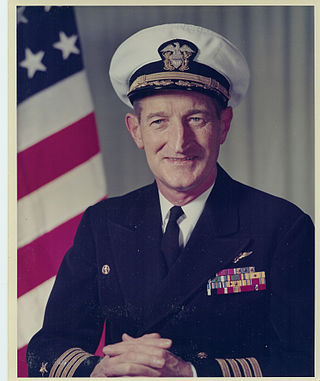
Frederick T. Moore Jr. was a United States Navy captain. During World War II, he was executive officer of Fighter Squadron 1 operating off the carrier USS Yorktown (CV-10) and commanding officer of the Air Group 35 aboard the aircraft carrier USS Chenango in the Pacific. During the Korean War, he was the commanding officer of naval air training at NAS Pensacola and the air officer on USS Coral Sea. His first sea command was aboard USS Suribachi. In 1962–1963, Moore was the eighth commanding officer of USS Saratoga. Late in his career during the Vietnam War, he was Chief of Staff of the Naval Air Training Command at Naval Air Station Pensacola from October 1965 to July 1969.
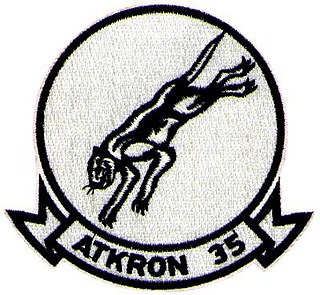
Second VA-35, nicknamed the Black Panthers, was a long-lived Attack Squadron of the U.S. Navy. It was the second squadron to be assigned the VA-35 designation.

VA-54 was an early and long-lived Attack Squadron of the U.S. Navy, operating under many designations during its 20-year life. It was established as Scouting Squadron VS-2B on 3 July 1928, and redesignated as VS-3 on 1 July 1937, and as Bombing Squadron VB-4 on 1 March 1943. It was redesignated as VB-5 on 15 July of that same year, and as Attack Squadron VA-5A on 15 November 1946. Finally, it was redesignated as VA-54 on 15 November 1946. VA-54 was disestablished on 1 December 1949. The squadron's insignia varied over its lifetime, depicting in turn a bird dog, a devil, and finally a bomb and five playing cards. Its nickname is unknown. It was the first squadron to be designated VA-54, a second VA-54 was redesignated from VF-54 on 15 June 1956 and disestablished on 1 April 1958.

VA-55 was an Attack Squadron of the U.S. Navy. It was established as Torpedo Squadron VT-5 on 15 February 1943, redesignated VA-6A on 15 November 1946, and finally designated VA-55 on 16 August 1948. The squadron was disestablished on 12 December 1975. It was the first squadron to be designated VA-55, the second VA-55 was established on 7 October 1983 and disestablished on 1 January 1991.
VA-75, nicknamed the Carrier Clowns, was an Attack Squadron of the U.S. Navy. It was established as Torpedo Squadron VT-18 on 20 July 1943. The squadron was redesignated as VA-8A on 15 November 1946, and finally as VA-75 on 27 July 1948. It was disestablished on 30 November 1949. A second squadron also bore the VA-75 designation.
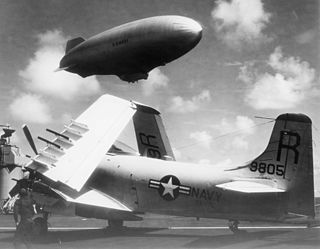
VA-175, nicknamed the Devil's Diplomats, was an attack squadron of the U.S. Navy. It was established as Torpedo Squadron VT-82 on 1 April 1944, redesignated as VA-18A on 15 November 1946, and as VA-175 on 11 August 1948. The squadron was disestablished on 15 March 1958.

Attack Squadron 15 (VA-15), nicknamed the Valions, was an aviation unit of the United States Navy. It was established as Torpedo Squadron 4 (VT-4) on 10 January 1942, redesignated VA-2A on 15 November 1946, and finally redesignated VA-15 on 2 August 1948. The squadron was disestablished on 1 June 1969, after 27 years of service.

Lance Edward "Lem" Massey was a U.S. Navy pilot during World War II.
VP-20 was a Patrol Squadron of the U.S. Navy. The squadron was established as Patrol Squadron 8-S (VP-8S) from elements of VT-9S on 1 July 1929, redesignated Patrol Squadron 8-F (VP-8F) on 3 April 1933, redesignated Patrol Squadron 8 (VP-8) on 1 October 1937, redesignated Patrol Squadron 24 (VP-24) on 1 July 1939, redesignated Patrol Squadron 12 (VP-12) on 1 August 1941, redesignated Patrol Bombing Squadron 120 (VPB-120) on 1 October 1944, redesignated Patrol Squadron 120 (VP-120) on 15 May 1946, redesignated Heavy Patrol Squadron (Landplane) 10 (VP-HL-10) on 15 November 1946, redesignated Patrol Squadron 20 (VP-20) on 1 September 1948 and disestablished on 31 March 1949. It was the third squadron to be designated VP-20, the first VP-20 was redesignated VP-44 on 1 July 1940 and the second VP-20 was redesignated VPB-20 on 1 October 1944.

VPB-11 was a Patrol Bombing Squadron of the U.S. Navy. The squadron was established as Torpedo & Bombing Squadron 19-D14 (VT-19D14) on 7 February 1924, redesignated Torpedo & Bombing Squadron 6D14 (VT-6D14) on 1 July 1927, redesignated Patrol Squadron 6-B (VP-6B) on 1 April 1931, redesignated Patrol Squadron 6-F (VP-6F) on 17 July 1933, redesignated Patrol Squadron 6 (VP-6) on 1 October 1937, redesignated Patrol Squadron 23 (VP-23) on 1 July 1939, redesignated Patrol Squadron 11 (VP-11) on 1 August 1941, redesignated Patrol Bombing Squadron 11 (VPB-11) on 1 October 1944 and disestablished on 20 June 1945.

Ayao Shirane was a fighter ace in the Imperial Japanese Navy (IJN) during World War II. He participated in various battles and campaigns throughout the Pacific War and was eventually shot down and killed over Leyte, Philippines on 24 November 1944. He was officially credited with destroying nine enemy aircraft.
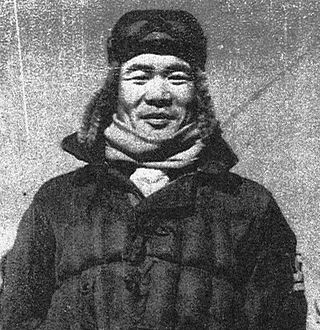
Iyōzō Fujita was an officer and ace fighter pilot in the Imperial Japanese Navy (IJN) during the Pacific War. He was officially credited with destroying 13 enemy aircraft. During the Battle of Midway alone, he claimed ten aircraft shot down in one day.





















